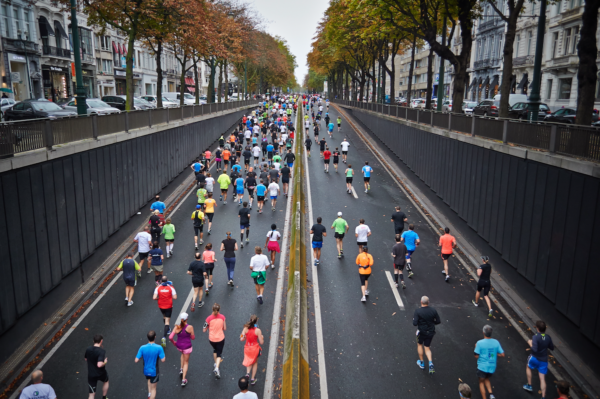 “If you can’t measure it, you can’t change it.”
“If you can’t measure it, you can’t change it.”
(Peter Drucker)
Wearing a fitness-tracking device helps me lead a healthier, more active life. I shared the expected and sometimes unexpected benefits of my Fitbit Charge HR in My Walk Around the World: Wearing a Fitbit. I love my device. So when Max Wegner, the Senior Editor at Appcessories, emailed me their very cool infographic about the State of Fitness Trackers in 2016, I knew I wanted to share it with you.
What is fitness tracking?
I love my fitness-tracking device because it captures and tracks important data for me, and allows me to view it on my computer and smart phone. I use mine to automatically track my steps walked, floors climbed, sleep, heart rate, and weight. My Fitbit also tracked every one of my 65,000 Steps in the Wilderness for the Wish Kids. Since October 2013, I have logged 14,991,076 steps (nearly 7,500 miles). My next big goal is to walk a lifetime total of 24,900 miles, enough to walk clear around the world. I’m currently on target to reach that goal before my 63rd birthday.
Tracking my sleep has helped me really improve this important health practice, too. My goal is to get eight full hours of sleep every night. The Fitbit measures my time both in bed and actually asleep. Whenever I get less than eight full hours, I make adjustments to my schedule to make it up so that I average eight hours of nightly sleep for each week. Life is so much better when you are well rested.
Tracking my heart rate has helped me stay focused on relaxing my nervous system. In Using Technology to Prevent Illness Rather Than Cure It, I shared my current experiment, to relax and restore my anabolic hormone levels, which have been damaged from years of chronic stress. With my device, I can actually see the progress I am making. One year ago, my average resting heart rate for one week was 66 beats per minute. Last week it was 57.5.
The Fitness Tracker Manifesto
The awesome infographic created by Appcessories (see below) explains where we are in the world of fitness-tracking devices and where we’re going. Section 1 displays more than 100 brands that are currently in the game. Section 2 shows the global market of users. Section 3 identifies all the various types of devices currently on the market. Section 4 lists the many health areas fitness trackers allow you to check. Personally, I’m currently very interested in learning how one of these can track my mood. Section 5 explores the future of these amazing devices, including the monitoring of eating habits, the measurement of physical health, and the tracking of emotions and stress control. Count me in when a device can actually measure the state of my central nervous system, circulatory system and metabolic system.
Making Fitness Fun
I also love the social aspect of my device. I share my personal fitness information with a small group of family and friends, meaning that I can cheer on my buddies and they cheer for me too. Fitbit also cheers us all on with a system of reward badges. My most recent badges include the Ruby Slippers for walking 65,000 steps in a single day, the Castle for climbing 200 floors in one day, the Russian Railway for 5,772 lifetime miles, and the Spaceship for 14,000 lifetime floors. It brings a little happiness to my day when I earn a new badge, and that keeps me moving forward on my fitness journey.
Happy New Year
The New Year provides a great opportunity to begin or enhance a fitness practice. I’d love to share the FitBit journey with you and others from our Happy Living community, so please invite me to be your friend by adding me from your FitBit dashboard. My email is [email protected]. I hope you feel inspired to get your own FitBit and if so, I look forward to walking with you in 2017 and beyond!
![]()
Image via Unsplash | This post may contain affiliate links, which means if you click and then purchase we will receive a small commission (at no additional cost to you). Thank you for reading & supporting Happy Living!

